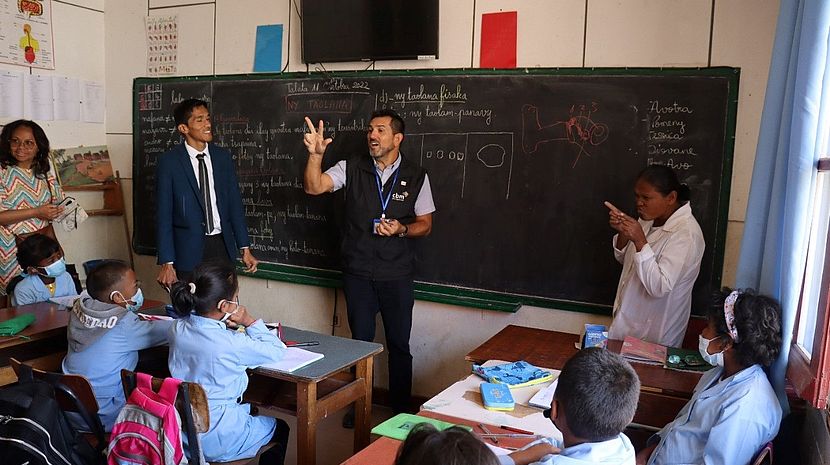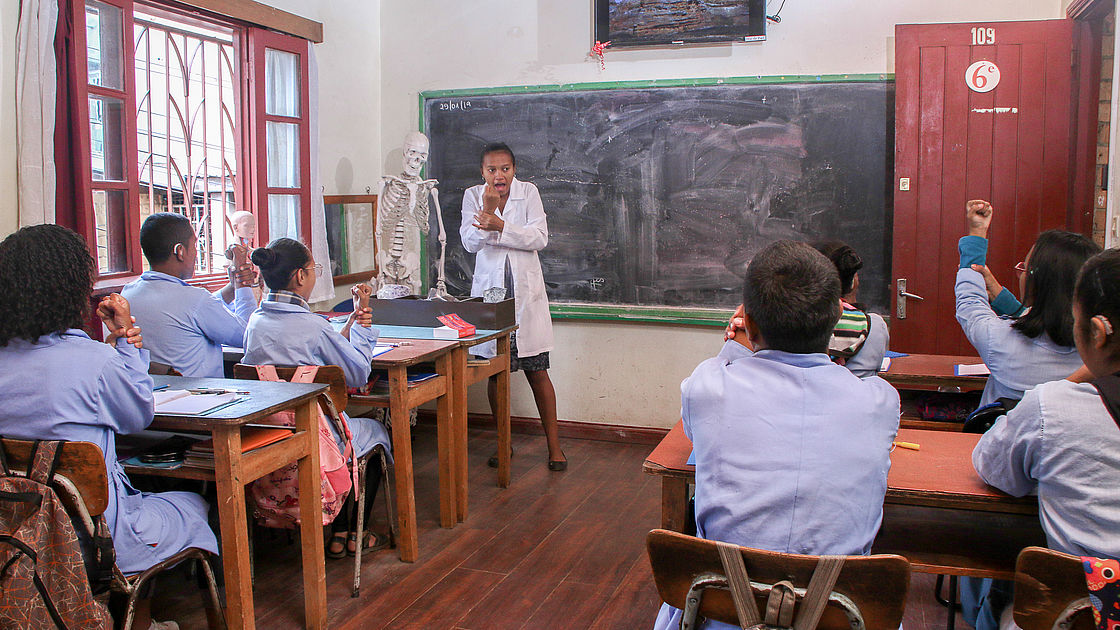Witnessing a New Generation of Children in Madagascar Who Understand Inclusion

Diego visiting AKAMA school in Antananarivo, Madagascar.
CBM
Ahead of World Hearing Day 2023, Diego Santana-Hernandez, Senior Ear and Hearing Care CBID Advisor at CBM, reports on his experiences with CBM's inclusive ear and hearing care projects in Madagascar.
I recently visited Madagascar to deliver a training course, visit some CBM Ear and Hearing Care (EHC) projects and advise the Ministry of Health on its national strategic plan for Ear and Hearing Care. The visit was the culmination of a five-year project in the country, MAHENO. The trip had already been cancelled twice because of the pandemic, so I was very happy that the trip was such a success.
During the trip I also visited a unique school in the middle of the city, the AKAMA School for Deaf and Hard of Hearing Learners and Resource Centre, a separate CBM project. It was established in a small old building in the city centre and has gradually grown over the years. Currently, about 90 students are taught there.
The CBID Approach
The AKAMA School serves a community of deaf students who have nowhere else to access education. There are different levels of education, even from pre-school onwards. For the toddlers, they have started a project where hearing children also come and learn to communicate in sign language. I felt like I was witnessing the building of a new generation of children who will grow up understanding the meaning of an inclusive society.
Deaf and hard of hearing learners from the MAHENO project are referred to AKAMA, and AKAMA learners who need additional treatment are referred to MAHENO. The MAHENO project provided ear and hearing care and surgery, with a special focus on vulnerable patients. Our work in Madagascar is so effective because it is comprehensive.
It is not just about health, but also about working in the community through a Community Based Inclusive Development approach and the provision of education more broadly: formal and non-formal education, raising awareness and building connections between health workers and the community so that people with hearing impairments are included in all aspects of life.

Deaf and hard of hearing learners in class at the AKAMA school in Madagascar
CBMWhat Would I Take Away From This Visit?
First, that government involvement is essential. Five years ago, we started our collaboration with low-key interventions, doing World Hearing Day activities with the Ministry of Health, and inviting them to TV and radio interviews. Now, thanks to the partner's connections with the ministry, there is a new strategic country plan for EHC and that, for me, is the most important achievement that will hopefully have long-term impact.
The second point is the importance of the partner's leadership. They have always looked for ways to improve EHC services and this partnership has been wonderful.
Thirdly, even when the government and a wonderful partner are working together, the CBM country office plays a crucial role. They are essential in linking this strategic work to the community and making sure it works on the ground, which is done through the CBID partners and their community workers.
Where do we go from here? This project in Madagascar is just the beginning. Our goal is to use everything we have learned to improve ear and hearing care in other parts of Francophone Africa. We will use the lessons learned to build the capacity of CBM partners in Cameroon and then replicate it in other countries in West and Central Africa. such as Côte d'Ivoire, Niger and the Democratic Republic of Congo.